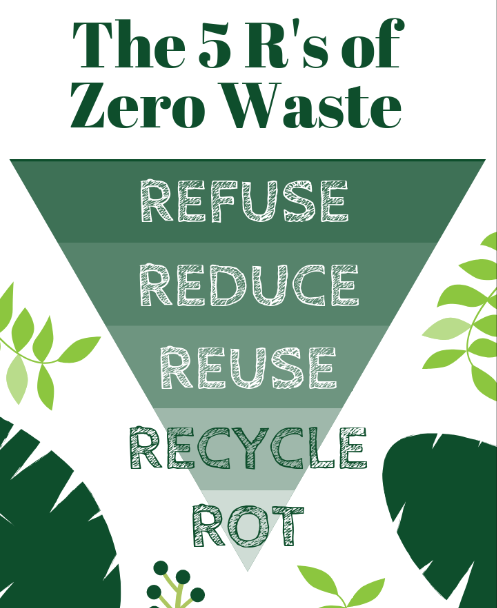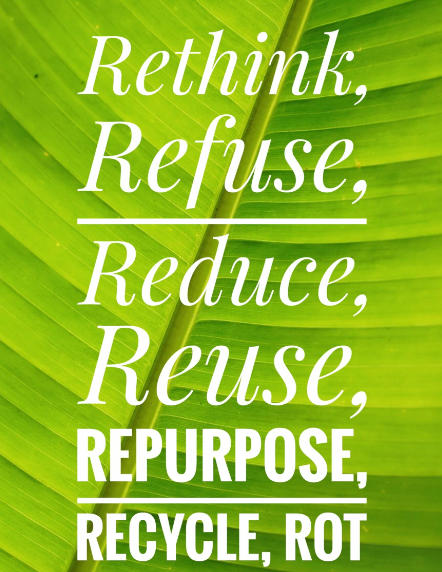The R’s of waste management are the lifeline of effective waste management system (Check this out: Waste Management- Know How) because without them proper waste management is impossible.
They are a simple get effective method of helping to cut down on waste.
The R’s has become synonymous with waste collection and is used in countries across the world to educate people about its importance.
With time the R’s have evolved from 3 to 5 to 7 to 8. Now let’s discuss about the evolution.
Content
- 3 R’s of waste management.
- 5 R’s of waste management.
- 7 R’s of waste management.
- Conclusion
- FAQ from answer the public.
3 R’s of Waste Management

The first-ever R’s of waste management were the 3 R’s- Reduce,Reuse and Recycle and these 3 are the waste hierarchy of solid waste management.
I remember this was the mantra of cleanliness taught by our teachers to us in school.
Almost everywhere we used to see the campaigns and operations which promote these three R’s of waste management.
History
There tends to be a bit of debate about the creation of of the three R’s slogan but it is believed that the economic boom in 1950s lead to an increase in the amount of trash produced by Americans due to the growing popularity of single use items but soon the Americans realize the environmental impact of this littering.

Inspired by the “teach-ins” held across the country to educate citizens on the Vietnam war, Wisconsin Senator Gaylord Nelson decided to bring the world together for the first ever Earth Day on April 22, 1970.
Nearly 20 million Americans celebrated together at fairs, festivals and other community events organised to raise awareness of environmental issues.
This historic day ultimately leads to the environmental protection agency being created that same year.
Source: Recyclenation
In 1976 Congress passed the Resource Conservation and Recovery Act to increase recycling and conservation efforts as waste became a bigger problem. It is assume that this slogan “reduce, reuse, recycle“ was born at that time.
Now let’s discuss them briefly:
REDUCE
It comes first in the hierarchy of the waste management. Reducing is the best way to go about managing solid waste.
The concept of this first rule is to only use what is essential as if we consume less than the solid waste will be lesser as well.
Reducing does not mean to cut back on everything it simply means:
- To buy products with less packaging.
- Buy products in bulk.
- To try to stay away from disposable goods.
- Buy durable goods especially while making a big purchase.
RE-USE
The second R in the waste management hierarchy is reuse.
This one is becoming more and more popular with the search of upcycling and craft project all over the web.
It simply means using the same item in a different way, compared to what it is intended for. Some ways of reuse are:
- Using sealable containers rather than plastic wrap.
- Using reusable bags for shopping instead of bringing the plastic bags the shopkeeper provides.
- Look into upcycling ideas for common household items on the web.
- Donate if you don’t know how to reuse to those who know.
RECYCLING
The third and the final R is recycling. It is a complex procedure as it involves transforming an item into a new product that is more purposeful and usable.
Along with the basics of paper, plastic, glass and cardboard there are tons of items which can be recycled.
Recycling things is the best option to conserve natural resources and protect our environment but unfortunately in India out of 100% only 20% of the waste is processed.
Some of the ways of recycling are as follows
- Make sure any new items you bye have recyclable packaging.
- Try to compost your garden of food waste.
The three R’s of solid waste management is was information at involves different procedures.
Therefore in this section I have only described about the origin and the meaning of the three R’s.
5 R’s of Waste Management

For a long time being we were only taught of the three r’s of waste management but nowadays two more R’s have been added to this hierarchy of waste management.
There is no definite information about where and how these two more R’s originated. So here are the the 5 R’s of waste management from the top:
REFUSE
The first element of the five R’s hierarchy is refuse. If simply means refusing things you don’t need and say no to items you haven’t asked for.
Learning to refuse waste can take some practice but incorporating this step will you make a difference for the society and environment.
Start doing the following things to make a difference:
- Opt for produced that isn’t free packed in plastic.
- Use reusable produce bag for bulk items.
- Try not to collect business cards and flyers. Use your phone to take a photo instead.
REDUCE
The second one is reduce. It simply means reducing the use of harmful, wasteful and non recyclable products.
Reducing dependency on these kinds of products results in less waste materials ending up in landfill and the associated negative environmental impacts.
As mentioned above there are many ways in which we can reduce the waste.
RE-USE
The third one is reuse. single use plastics created a throwaway culture buy normalizing consumer behavior of using materials once and then throwing them away.
The best way to minimize the pollution is to start using and repairing items instead of buying a brand new one.
There are many ways through which this can be done like using reusable water bottle, reusable straw, reusable shopping bags, reusable food wrap for pouches and up-cycling the old items through the web also know as Re-purpose.
RECYCLE
This is one of the best step of waste management hierarchy as it is the most Eco- friendly waste disposal methods.
It means converting old items into new ones.
Recycling doesn’t only means of paper or plastic, anything made of metal wood and even e-waste can be recycled.
ROT
Finally the last and the new one rot. Once all options exhaust, the last thing to do to prevent waste from going to land field compost.
Composting food scraps not only provides with nutrient rich fertilizer, it also helps to reduce greenhouse emissions produced by landfill.
It may be difficult to make compost but can be done if you wish to do so.
7 R’s of Waste Management

We have already discussed about the 5 R’s of waste management now let’s add two more to these R’s and discuss about the 7 R’s of waste management in perfect order:
RE-THINK
The first and foremost R of this hierarchy is re-think. It simply means to take a moment to think about what is really important to buy.
When purchasing items remember the words of L.N. Smith “Every dollar you spend or don’t spend is a vote you cast for the world you want to live in.”
it is critical to realize that every choice you make is very important to the health of the planet. The main point is to stop and think.
REFUSE
The second element is refuse. As discussed earlier refuse means saying no to those products or companies that harm the environment.
One way to do this is to reduce items that are over- packaged in plastic. Use reusable bags for shopping instead of plastic.
REDUCE
The third element is reduce in the resource management hierarchy.
You can start with small ways by reducing your garbage, food waste, plastic and transportation.
Another way to reduce is to find items in your home that cause lots of waste and swap them for more environmentally conscious products.
REUSE
The fourth one in the hierarchy is reuse. It simply means that throwing is not an option instead it can be re-used or up-cycled.
You can also donate to those you know how to reuse those things.
REPURPOSE
The fifth one is re-purpose in the hierarchy. It simply means up-cycling things in a creative way to be used in household.
Nowadays it is a trend to make useful things out of waste.
Below are a few examples of ways to repurpose the items right in your home:
- Old and used glass jars or bottles can be upcycled in many different ways to decorate the house.
- Produce or shopping bags can be made out of old t-shirts.
RECYCLE
The most efficient and sixth one in the hierarchy is recycle.
As we already know it means giving new life to those things which are useless and harmful in nature.
It is the most effective way to get rid of the waste in an efficient manner.
ROT
The last one is rot, also known as composting is the act of turning food waste another organic back into nutrient- rich soil.
It is best to transform organic waste into compost rather than sending it to the local landfill to increase greenhouse gases in the form of methane.
Conclusion
This was the evolution of the R’s of waste management. From 3 to 5 to 7 but that’s not the end the story still continues.
You can add more R’s to your list if you wish to do so but the most important point is to follow these R’s.
FAQ from answer the public
Ans: The R’s are the lifeline of waste management.
There are generally 3 R’s of waste management and they are reduce, reuse and recycle but nowadays more R’s can be added to your list if you want.
Ans: Waste management helps the environment in the following ways:
1. It helps to curb pollution.
2. When done properly waste management and recycling help to minimize the greenhouse gases.
3. It can also conserve energy and help reduce harmful deforestation including cutting down less trees for paper production.
Ans: Waste can adversely affects the environment as:
1. some waste can rot but not all and in the process it may smell and
2.generate harmful greenhouse gases like methane which is explosive and causes pollution.
Ans: Yes, Waste management picks everyone’s waste like electronics, paints, motor oil, garden chemicals and other hazardous household chemicals.
Ans: Yes, waste management services include pickup of all kind of household items like mattress, major appliances etc.
